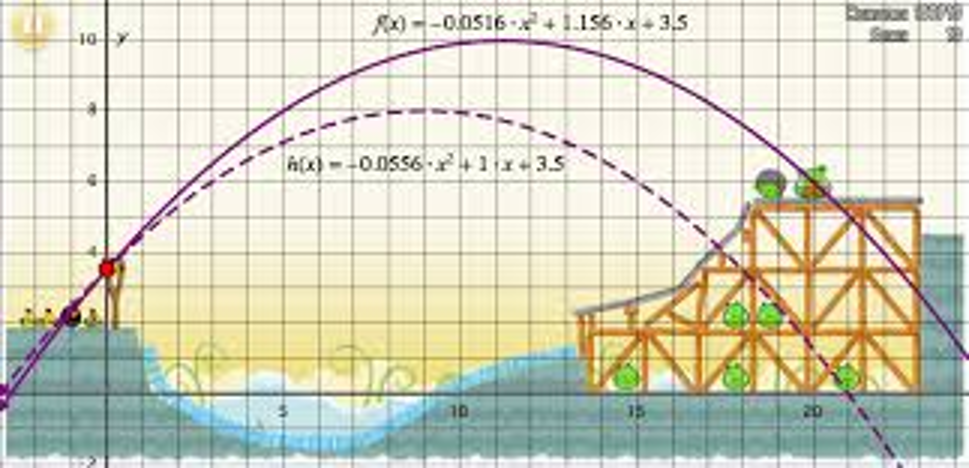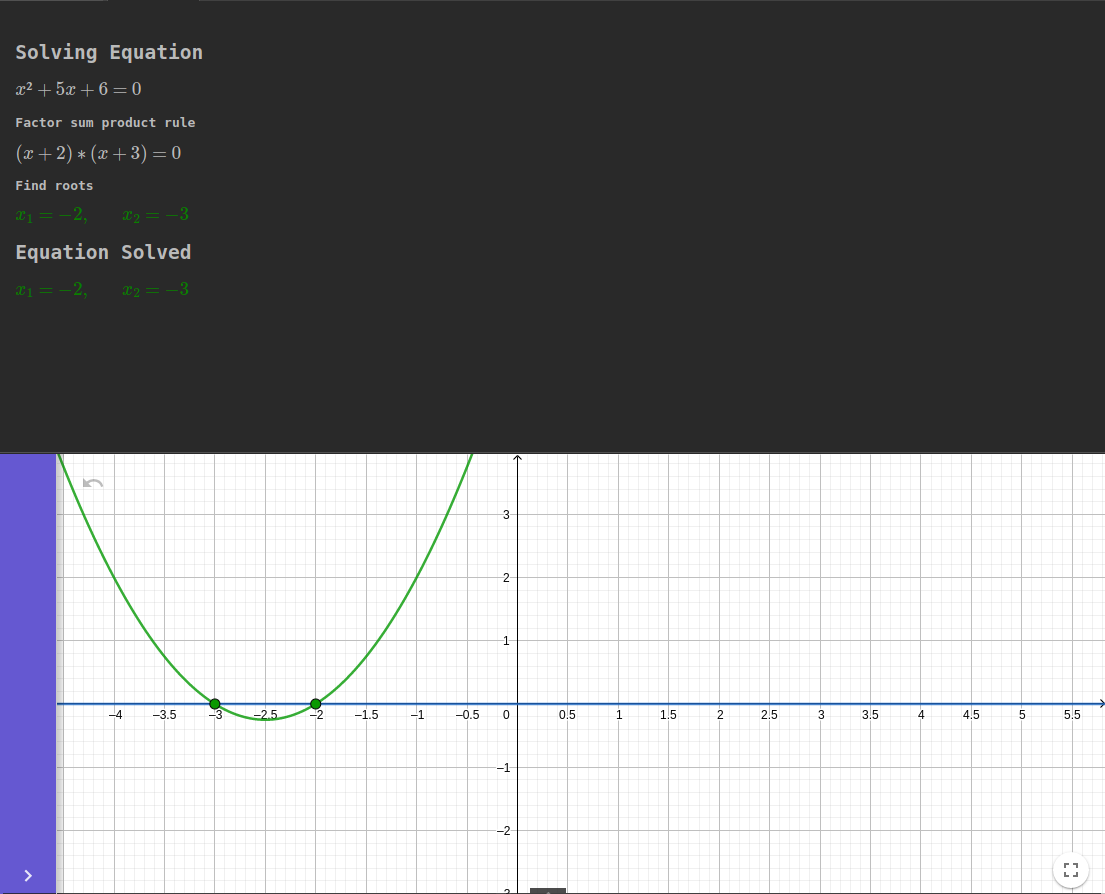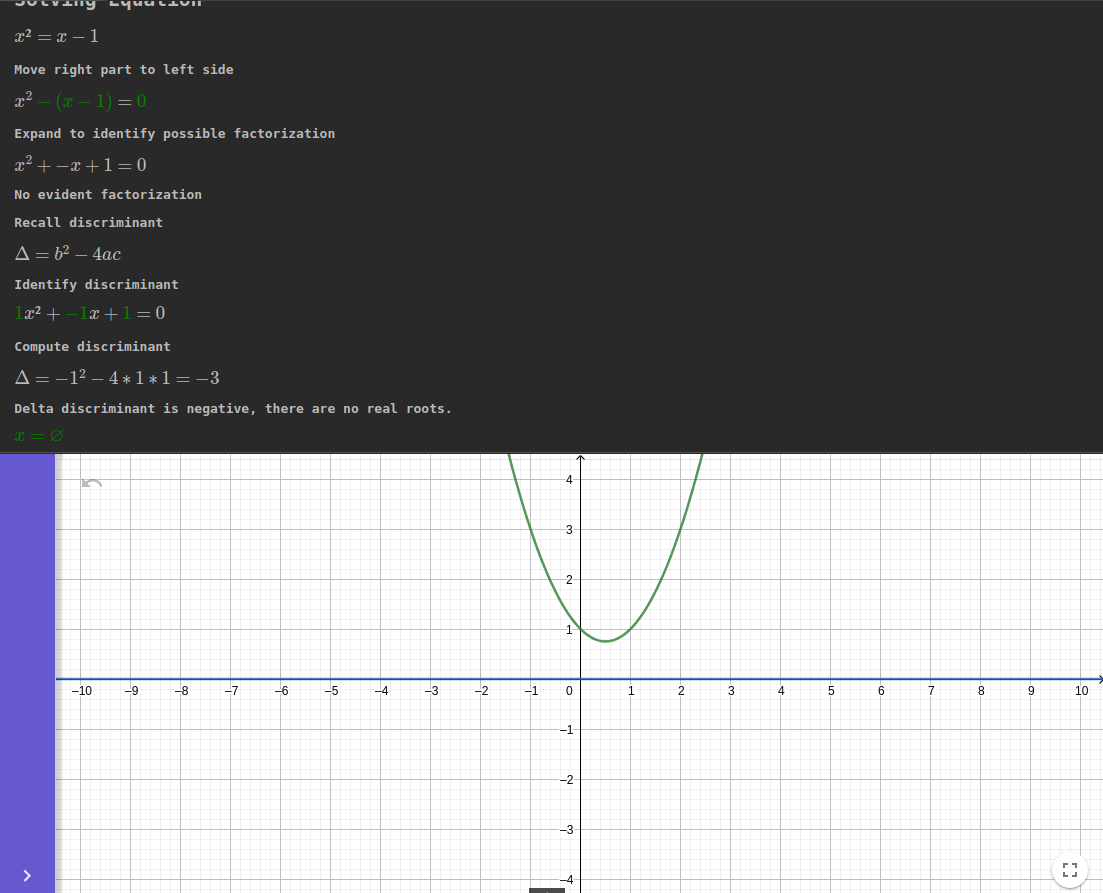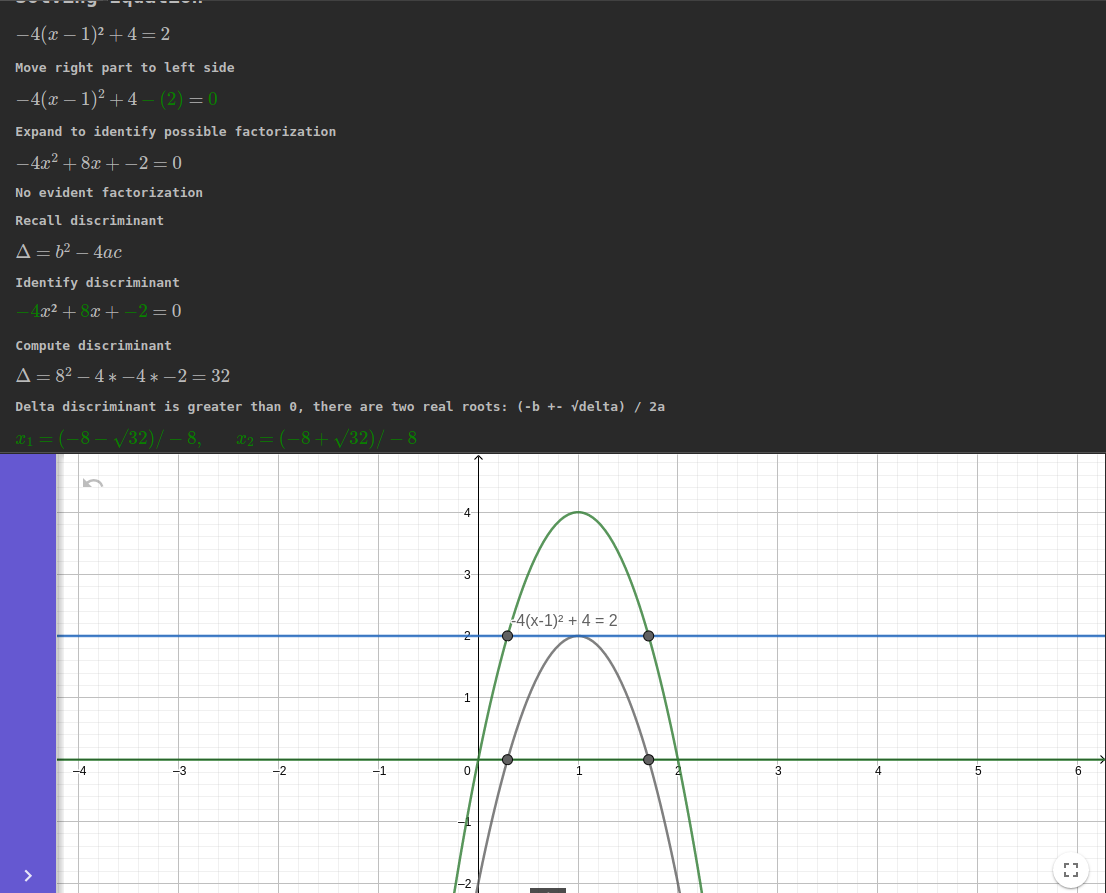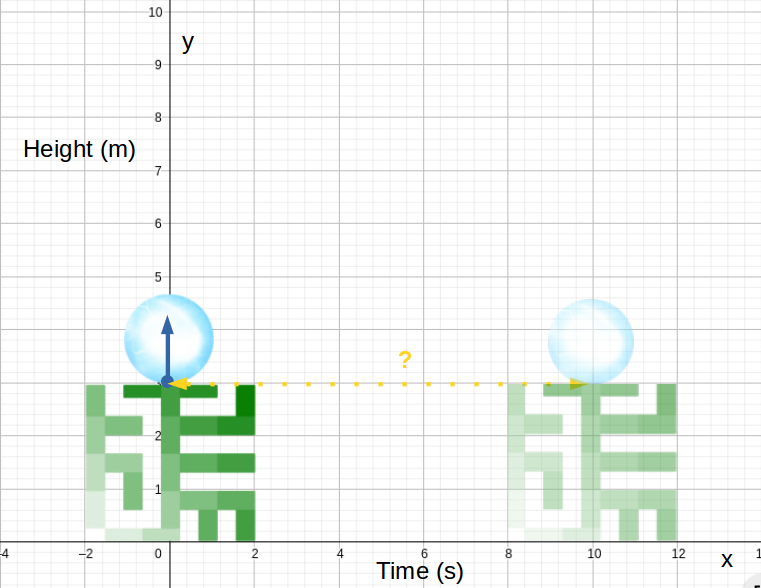Quick Access
Introduction
In the module, Linear Equations we saw how to solve various types of linear equations; the kind of equations that arise very naturally when solving simple everyday problems.
While quadratic, polynomials of degree two or Second Order, equations do not arise so obviously in everyday life, they are equally important. They will frequently turn up in many areas and very often make an appearance as part of the overall solution within most of the real world problems in the fields of physics, astronomy, engineering, computing, architecture... (see 'few common use cases' below).
As quadratic equations arise naturally everywhere, these types of equations were already solved by both the Babylonians and Egyptians at a very early stage of world history (around 2000 BC). The resolution techniques were then refined all along with the history, all across the world, before being fully integrated into modern mathematics (with the formalization of complex numbers, but you will not need them here ^^).
Very few of the everyday use cases
- Compute all kind of trajectories (ball, angry bird, jump from a cliff, planets…).
- Compute all kind of optimizations such as maximizing profits on the market.
- Calculate the power going through the electrical circuit.
- Designing telescopes, lenses, curved mirror, camera etc.
- The golden ratio is found as the positive solution of the quadratic equation x² - x - 1 = 0.
(e.g. Leonardo da Vinci's illustrations on the Divine Proportion,
the famous golden spiral, Fibonacci sequence...)
- The Taxman, a quite unpleasant invention we still endure today (ref. Babylonians) ...
In practice
In practice, Quadratic equation is just a step further from the linear equation, we still restrict the problem to a single unknown variable (usually called 'x') and add one term: x² (or x*x). The general form of such equation (after moving everything on the left side) is: $$\textbf{ax² + bx + c = 0} ,\: \: where\: \: a \neq 0$$
The Game
The game rules are the same one as for playing with linear equations (cf. Linear Equation Game Rules). However, we now get a few newer tools to achieve our goal and a newer methodology; bit a bit you are gaining the mathematical power. To always solve a quadratic equation, two paths are proposed here: from the quickest to the most general. The approach described below is a must have to tackle any second order equations easily.
Quadratic tools
|
|
Discriminant
$$\Delta=b²-4ac$$Solution
$$x={\frac {-b\pm {\sqrt{\Delta} }}{2a}} \quad (\Delta >= 0)$$First, check briefly for a pattern match (Factoring)
For some equations, we will be able to find the solution in a wink if there is a factor pattern (cf. quadratic tools, right column). For instance: $$x² + 5x + 6 = 0$$ We may recognize here the first pattern form: $$x² + (a + b)x + ab$$ Indeed if a = 2 and b = 3: $$x² + (2 + 3)x + (2*3) = x² + 5x + 6$$ Therefore: $$x² + 5x + 6 = (x + 2)(x + 3)$$ Finally with the magic of our tool (cf. left column third row): $$\color{green}{x_1 = -2, \qquad x_2 = -3}$$
It is the most efficient way to get the solution done and does not require any manipulation most of the time. However, the first disadvantage is that we do not always have evident factorization, while the second is the need to practice for being efficient.
To be more precise on how to get the pattern (with ax² + bx + c), you need to find two numbers n1, n2 such as: $$n_1*n_2 = a*c$$ $$n_1+n_2 = b$$
Otherwise, use the Quadratic Formula
This is the general solution of any quadratic equation: it works in all possible cases. A quadratic equation can either have two distinct roots, only one (sometimes called a repeated or double root) or even no root solution at all (without including complex number): Three possible cases then!
First, we compute the discriminant delta: $$\Delta = b^{2} - 4ac$$
If Δ > 0, two real roots (2 intersection points): $$x_1={\frac {-b+{\sqrt {\Delta }}}{2a}} \qquad {\text{and}} \qquad x_2={\frac {-b-{\sqrt {\Delta}}}{2a}}$$
If Δ = 0, one double root (1 intersection point): $$x=-{\frac {b}{2a}}$$
If Δ < 0, no real root (no intersection): $$x=\varnothing$$
Check your solution
As usual, we do not forget to check the answer to detect any future problem (Replace 'x' by the solution value within the equation).
Here is some step-by-step equation resolution our virtual teacher Globo made.
Real world example - Compute Trajectories on Earth
We will see how to use some Newton's precepts and get answers by solving quadratic equations; do not be afraid, stay with us, it will be smooth!
The Hurna mascotte, Globo who stands 3m tall, will gently throw straight up a ball at a velocity of 10 m/s (36 km/h) and wonder how much time will the ball takes to get back to its hand:
A known Kinematic equation (synonym to Projectile Motion or Trajectory Formula) will be used. However, we neither need to know it nor to understand it to use it now.
Using Kinematic Equation
Here is the equation giving the vertical position of the ball (h) at any time (t): $$h = –\frac{1}{2}Gt² + v_0t + h_0$$
We replace h by y and t by x for convenience: $$y = -\frac{1}{2}Gx² + v_0x + y_0$$
What is this equation saying:
| Symbol | Signification | In our example |
|---|---|---|
| y | is the height where the ball is at a given time (x) | $$-\frac{1}{2}Gx² + v_0x + y_0$$ |
| x | is the time variable | x (time variable) |
| G | is the Gravitational Constant (9.8 m/s²) pulling down the ball on Earth | 9.8 m/s² |
| $$y_0$$ | is the height where the ball is at time 0 (when Globo throw the ball) | 3 m |
| $$v_0$$ | is the upward velocity of the ball at time 0 (the velocity of Globo's throw) | 10 m/s (36 km/h) |
Now if we place the known variables within the equation
(we approximate here ½G ~ 5 m/s²):
$$y = -5x² + 10x + 3$$
Whow…. Exactly the form of a quadratic equation! How does it look?

The answer may be read straight from the graph here
(The ball stays exactly 2s in the air).
If we quickly check:
$$3 = -5 * (2 * 2) + 10 * 2 + 3 = -20 + 20 + 3 = 3 \qquad Perfect!$$
However, most of the time, it will be much more challenging to get a precise answer.
Still, you already know how to solve such equations with some algebra and always get the most
accurate solution ;)
Jump in Hurna Explorer to solve and visualize any quadratic equations step by step with our virtual teacher Globo.


 Play online
Play online
 Step-by-step Solver
Step-by-step Solver
 Proof - Quadratic formula
Proof - Quadratic formula
